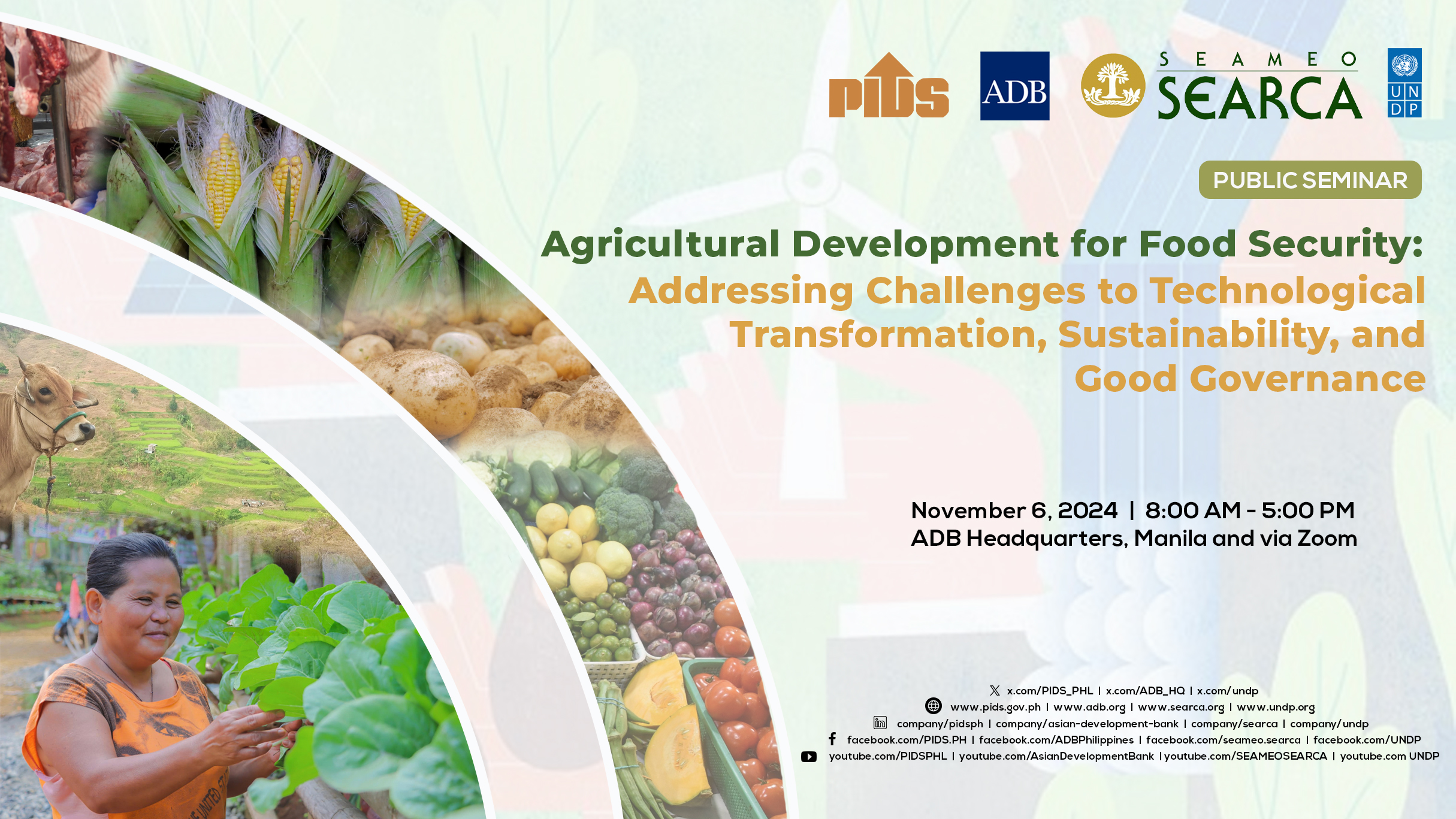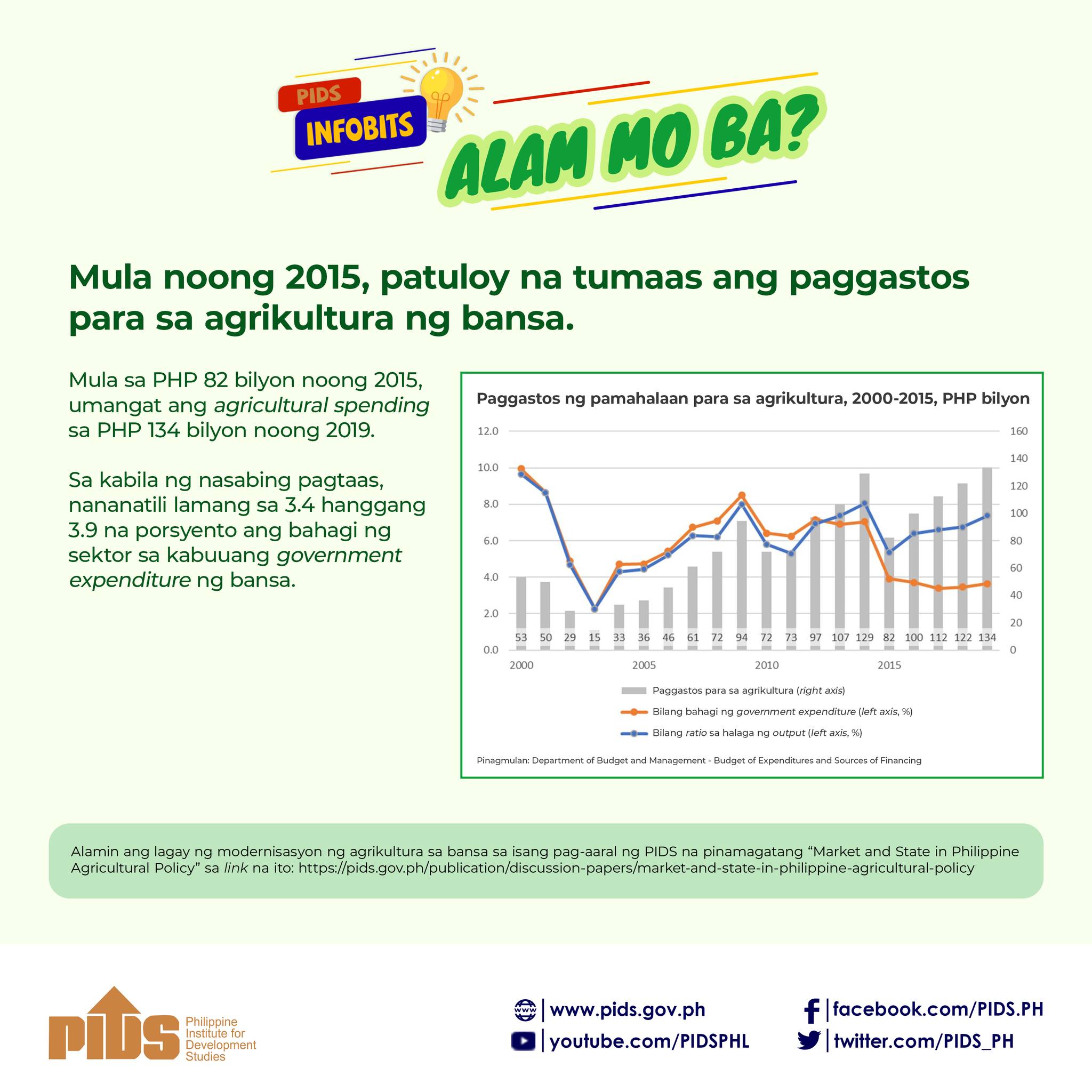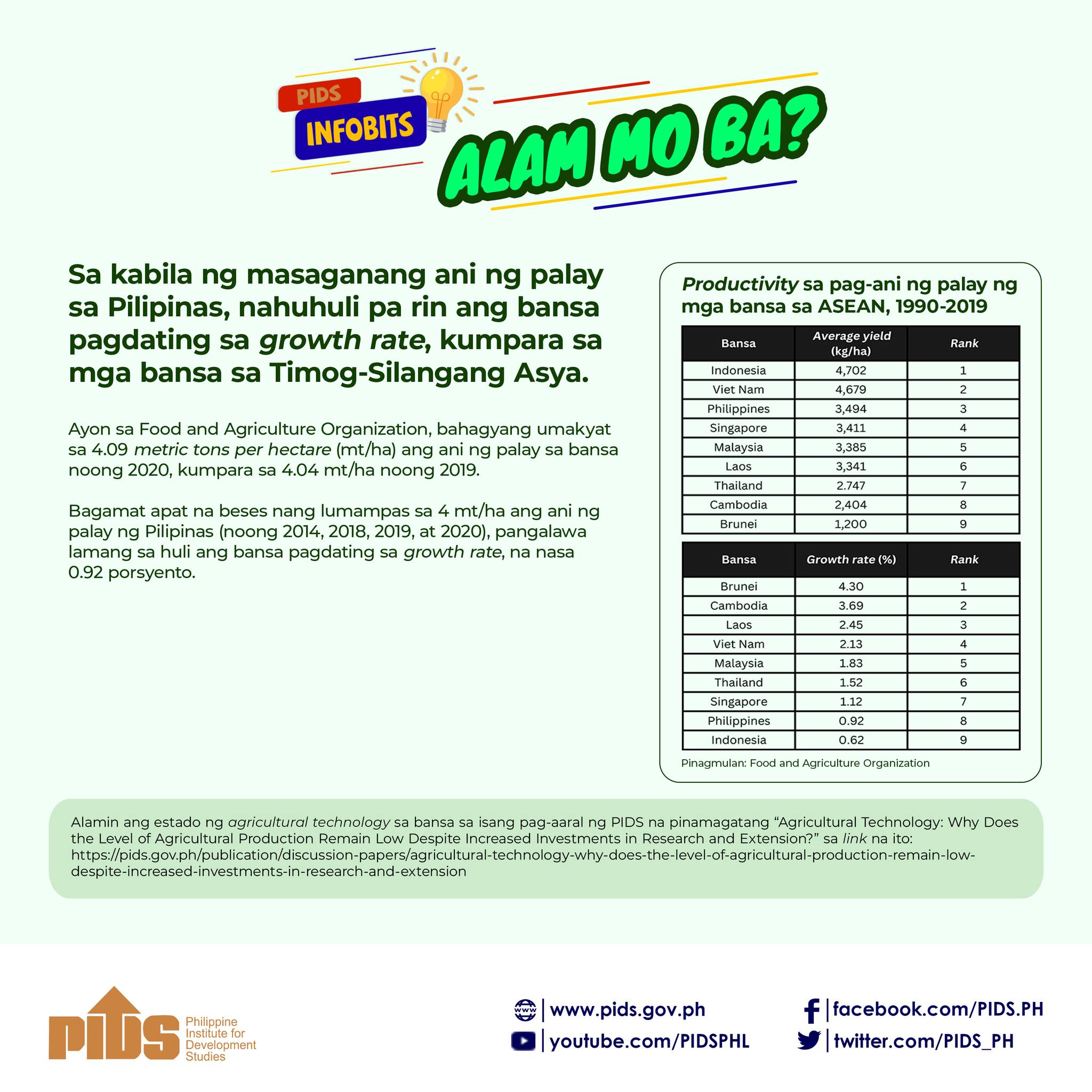THE PHILIPPINES’ agricultural output shrank for a second straight quarter in the July-to-September period mainly due to declines in crops and fisheries production, the Philippine Statistics Authority (PSA) said.
Data from the PSA on Wednesday showed the value of production in agriculture and fisheries at constant 2018 prices dipped by 0.3% to P412.412 billion in the July-to-September period, “due to reductions in crops and fisheries production.”
This was a reversal from the 1.6% growth in the same period a year ago, but an improvement from the 1.2% contraction in the second, the value of production in agriculture and fisheries rose by 4.3% to P522.58 billion in the third quarter.
For the nine months to September, the value of production in agriculture and fisheries at constant 2018 prices inched up by 0.2% from the 0.3% increase in the same period in 2022.
“Despite (the) slight contraction in the value of farm production in the third quarter, there are still strong indications the sector could contribute positively to the economy,” the Department of Agriculture (DA) said in a statement.
The DA set a target of 2.3%-2.5% for agricultural output growth this year.
Crops, which account for more than half or 54% of the sector’s overall production, slipped by 0.4% to P222.69 billion in the third quarter. This was a reversal of the 1.8% expansion in the same period a year ago and the 1.2% growth in the second quarter of 2023.
Roehlano M. Briones, a senior research fellow with the Philippine Institute for Development Studies, said that the drop in crops output was mainly due to weather disruptions.
For the first nine months, the value of crop production grew by 0.9%, an improvement from the 1% decline a year earlier.
In the third quarter, the decline in crop output was mainly attributed to the lower production in sugarcane (-26.4%), potato (-26%), mongo (-21.1%), cabbage (-17.5%), eggplant (-13.9%), and rubber (-12.7%). Lower output was also seen in abaca (-7.7%), ampalaya (-7.5%), and coconut (-1.9%).
Meanwhile, tobacco production surged by 122.1% and onion by 165.1%. Corn inched up by 5%, while banana (0.03%) and mango (15.2%) also showed increased production.
Fisheries recorded the steepest drop in the third quarter as production fell by 6.1% to P58.72 billion, worsening from the 5.2% decline a year ago but improving from the 13.8% contraction in the previous quarter.
Fisheries contributed 14.2% to the total share of agricultural output.
For the January-to-September period, the value of fisheries output at constant 2018 prices fell by 7% from the 4.3% decline a year ago.
Former Agriculture Undersecretary Fermin D. Adriano said fisheries production was affected by typhoons during the third quarter.
Latest data from the Agriculture department showed that the southwest monsoon along with typhoons Egay (international name: Doksuri) and Falcon (international name: Khanun) caused around P12 billion in agricultural damage, with rice production losses at P3 billion. The volume of lost production was estimated at 279,289 metric tons (MT) with 250,174 hectares of affected farmland.
Pangingisda Natin Gawing Tama Network representative Dennis F. Calvan said the contraction in fisheries production was due to “a lot of pressure to the already depleted resource.”
“We might be feeling the brunt of the impacts of El Niño, though technical assessments should be conducted first,” he said in a Viber message.
For the third quarter, double-digit declines were seen in tiger prawn or sugpo (-49%), bigeye tuna or tambakol (-41.1%), fimbriated sardines or tunsoy (-37.8%), mudcrab or alimango (-28.1%), squid or pusit (-26.3%), cavalla or talakitok (-26.3%), threadfin bream or bisugo (-19.4%), blue crab or alimasag (-18.1%), grouper or lapu-lapu (-15.5%), skipjack or gulyasan (-12.6%), and milkfish or bangus (-12%).
Meanwhile, higher production was recorded for indian mackerel or alumahan (60.6%), big-eyed scad or matangbaka (32.8%), yellowfin tuna or tambakol (28.5%), round scad or galunggong (17.2%), tilapia (6.9%), and seaweed (14%).
Newly appointed Agriculture Secretary Francisco Tiu Laurel, Jr. said that the latest agricultural output data still show positive indicators for key commodities under crops and fisheries.
“As we look at the data more closely, we could see positive signs in the rice, corn and onion harvest as well as in our production of tilapia and galunggong — all important food items for the Filipino masses,” he said.
BRIGHT SPOTS
On the other hand, the livestock and poultry sectors recorded gains in the third quarter.
Mr. Adriano said this was due to the recovery of the livestock sector from African Swine Fever and the poultry sector from avian flu.
The value of livestock production, which accounted for 16% of total farm output, rose by 2.5% to P66.1 billion in the third quarter. This was lower than the 4% growth in the third quarter a year ago, but better than the 0.7% increase in the second quarter.
In the third quarter, hog and goat production grew by 3.3% and 0.1%, respectively. However, lower production was seen for dairy (-12.4%), cattle (-1.5%), and carabao (-0.3%).
In the nine months to September, the value of livestock production rose by 2.4%, higher than 1.8% in the same period a year ago.
Meanwhile, poultry output expanded by 2.9% to P64.89 billion in the third quarter, slower than the 6.4% growth in the same quarter of 2022 but higher than the 1.5% increase in the second quarter.
Poultry accounted for 15.7% of the total agricultural output.
The value of chicken eggs, duck, and chicken production expanded by 4.7%, 3.6%, and 2.3%, respectively. Duck eggs declined by 2.2% during the quarter.
From January to September, the value of poultry production at constant 2018 prices rose by 2.5%, much slower than the 8.8% expansion a year ago.
Elias Jose M. Inciong, president of the United Broiler Raisers Association, said despite the growth registered for the poultry sector, this was still below expected output.
“The normal growth of the poultry sector is 4% to 7%. As such, there is some under performance. This may have been caused by adjustments made due to lower-than-expected demand,” he said in a Viber message.
OUTLOOK
For the last quarter of the year, Mr. Briones said he is not optimistic for a turnaround in agricultural output growth due to the El Niño weather event.
Latest data from the state weather bureau showed that a moderate El Niño will continue to persist and is predicted to intensify in the coming months.
On the other hand, Mr. Adriano said that there is a possibility for crops to post higher growth in the fourth quarter as it is “peak palay harvest” in October.
“We have not been visited by destructive typhoons in October and hopefully November, which is also good for other crops,” he said.
“Livestock and poultry will continue to increase given peak demand for such products this Christmas holiday,” he added.
For fisheries, Mr. Calvan said that there may be further decline due to inclement weather and the closed season for fishing grounds, which could disrupt production, especially for capture fisheries.
“Fish importation, where we are expecting 35,000 metric tons (MT) of assorted fish to enter the market, and reliance on aquaculture production are usually the interventions we do during the last quarter until first quarter of next year,” he added.
Mr. Laurel, who was named to the DA post last week, said he expects the agriculture sector will drive growth in the overall economy.
“With the growth numbers in the first three quarters, we remain optimistic agriculture could still contribute positively to the broader economy,” he said.
The agriculture sector contributes about a tenth of the country’s gross domestic product (GDP).
Third-quarter GDP data will be released today (Nov. 9).












